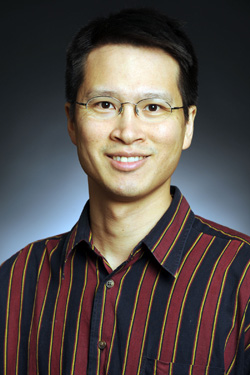
What is high-grade glioma?
High-grade gliomas are a diverse group of tumors of the brain and spinal cord that occur in children of all ages. This type of childhood cancer grows rapidly and has the ability to spread through brain tissue aggressively, making it very difficult to treat.
High-grade gliomas are classified by their location and by the appearance of the tumor under microscopic examination. This classification helps to assign a prognosis for the patient, but overall prognosis is poor for all types of high-grade gliomas.
We need your help to find the best treatments for kids with cancer. Donate now to help them grow up and live long, healthy lives >
What are the signs and symptoms of high-grade glioma?
Patients experience different types of brain dysfunction depending on the specific location of the tumor; however, some common problems include:
- Persistent headaches
- Nausea and vomiting
- New onset of seizures
How is this cancer type treated?
Treatment involves multiple teams of health care professionals and is centered on surgical resection of the tumor when this can be achieved without causing additional damage to the brain. Some types of tumors, such as diffuse intrinsic pontine gliomas, cannot be removed due to their location and therefore patients have a particularly poor prognosis.
Most patients will also receive radiation therapy along with some form of chemotherapy.
Unfortunately, our current treatments – while life prolonging – do not result in long-term survival for most patients. Research aimed at understanding the genetics and the biology of these tumors is critical if we are to develop effective therapies for high-grade glioma.
How are St. Baldrick’s Scholars helping to fight this type of cancer?

Dr. Lionel Chow, St. Baldrick’s Scholar
Dr. Lionel Chow, one of our St. Baldrick’s Scholars, shares, “Our understanding about the growth of this tumor is limited and therefore, patients with this disease have a poor outcome. I use laboratory models that strongly resemble these tumors in order to study their biology. Most importantly, these models will be used to help design and test different ways to treat high-grade glioma. My goal is to advance new ways of treating high-grade glioma from the lab into clinical studies that will benefit patients.”
How are St. Baldrick’s volunteers and donors making a difference?
The support provided by the St. Baldrick’s Foundation Scholar grant has been instrumental in allowing me to focus on my research goals. Young physician-investigators face the difficult task of balancing clinical care of patients, launching a cutting-edge research program and obtaining independent funding to conduct this research. By taking away the pressure and time spent in clinical care and in grant writing for the first few years, investigators like me can focus on launching our labs and testing our ideas.
Has your child been touched by childhood cancer or do you know a child that has been diagnosed? St. Baldrick’s Honored Kids, who have been affected by cancer, inspire fundraising participants to be part of the Foundation’s mission — to fund lifesaving research.

 SBF
Tweets »
SBF
Tweets »